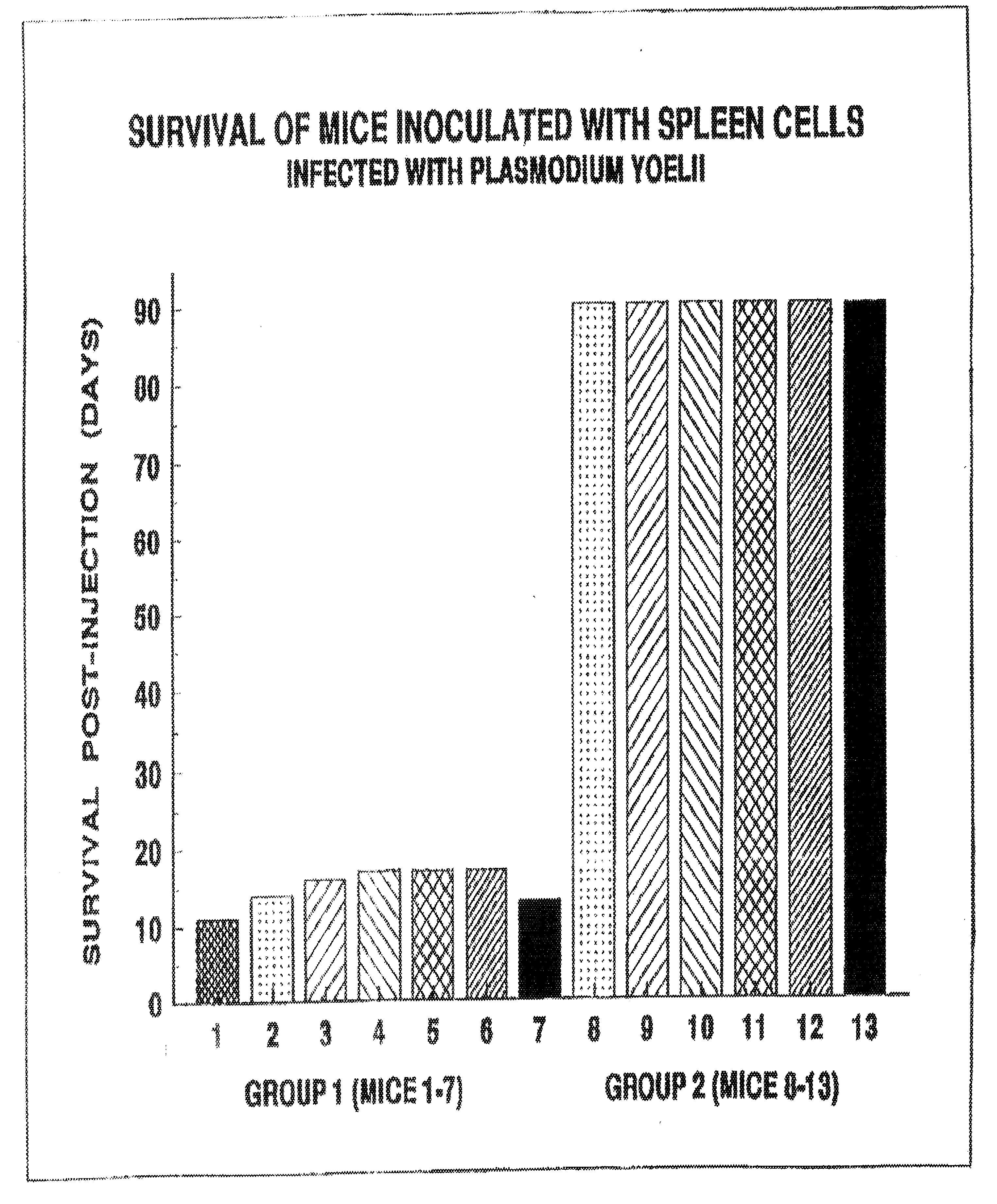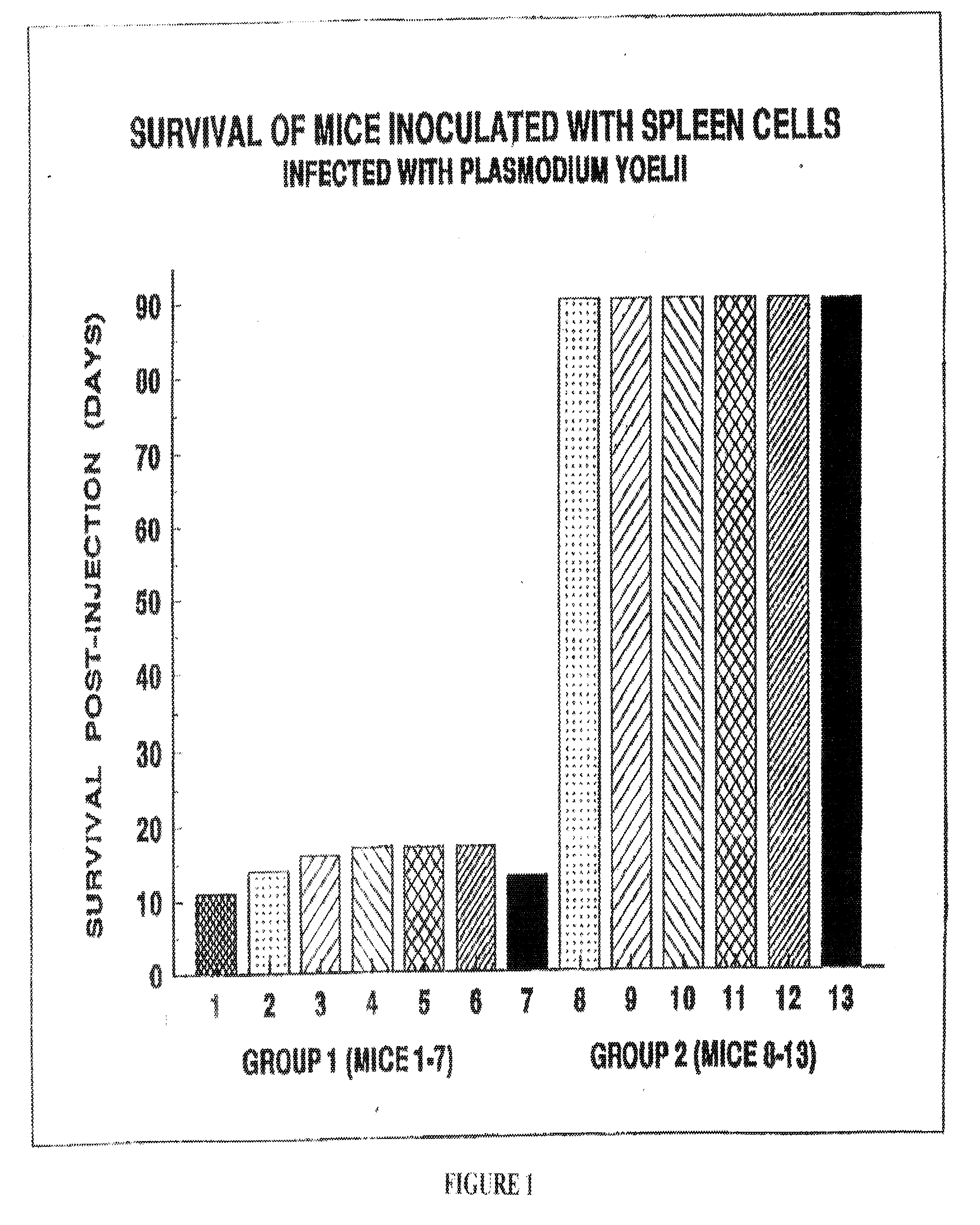Photochemotherapeutic method using 5-aminolevulinic acid and other precursors of endogenous porphyrins
a technology of endogenous porphyrin and photochemotherapy, which is applied in the direction of biocide, heterocyclic compound active ingredients, peptide/protein ingredients, etc., can solve the problems of inconvenient long time, inconvenient exposure, and persisting clinically significant porphyrin amount,
- Summary
- Abstract
- Description
- Claims
- Application Information
AI Technical Summary
Benefits of technology
Problems solved by technology
Method used
Image
Examples
example 1
[0065] Long Term Photodynamic Endometrial Ablation--Rats were divided into 2 groups (6 and 7 rats / group) and their uterine horns were injected with 4 or 8 mg ALA. Example 1, of U.S. application Ser. No. 08 / 082,113, filed Jun. 21, 1993 (U.S. Pat. No. 5,422,093), was repeated with the exception that all rats were exposed to light and the time from ALA administration to breeding was extended from 10-20 days to 60-70 days. All other procedures were identical to Example 1.
[0066] Breeding 60-70 days after photodynamic treatment with 4 mg ALA resulted in no implantations in the uterine horns treated with ALA (n=6) whereas fetuses were found in all control uterine horns treated with saline (n=6). These results confirmed the long term endometrial ablative effect of PDT. In the groups of rats (n=7) treated with 8 mg ALA 2 of 7 became pregnant in ALA treated uterine horns compared with 7 of 7 pregnancies in the saline treated horns.
[0067] Histology--In order to show normal uterine histology of...
example 2
[0068] The procedures of Example 1 (U.S. Pat. No. 5,422,093) were repeated with 1, 2, 3, 4 and 5 hour incubation periods using a level of 1 mM of ALA. No significant fluorescence was observed in the myometrial samples or in the endometrial samples incubated for 2 hours. Maximum fluorescence was observed in the endometrial samples incubated for 4 hours.
example 3
[0069] Endometrial Fluorescence in vivo following Topical Application of ALA in the Non-human Primate--50 mg of ALA was injected into the uterine lumen of an adult, healthy, female rhesus monkey following exposure of the uterus at laparotomy. A hysterectomy was performed 3 hours later and cross sectional slices incorporating endometrial and myometrial tissue were taken from the uterine specimen. These slices were subjected to examination by fluorescence microscopy as in Example 2 and 3 above. Fluorescence was observed throughout the endometrium of all slices. No fluorescence was observed in the myometrium.
[0070] The above examples clearly illustrate that endometrial ablation in a range of animal species, including humans, by photodynamic therapy using ALA can be achieved with little or no damage to the underlying myometrial tissues.
PUM
| Property | Measurement | Unit |
|---|---|---|
| wavelength | aaaaa | aaaaa |
| wavelength | aaaaa | aaaaa |
| wavelength | aaaaa | aaaaa |
Abstract
Description
Claims
Application Information
 Login to View More
Login to View More - R&D
- Intellectual Property
- Life Sciences
- Materials
- Tech Scout
- Unparalleled Data Quality
- Higher Quality Content
- 60% Fewer Hallucinations
Browse by: Latest US Patents, China's latest patents, Technical Efficacy Thesaurus, Application Domain, Technology Topic, Popular Technical Reports.
© 2025 PatSnap. All rights reserved.Legal|Privacy policy|Modern Slavery Act Transparency Statement|Sitemap|About US| Contact US: help@patsnap.com


